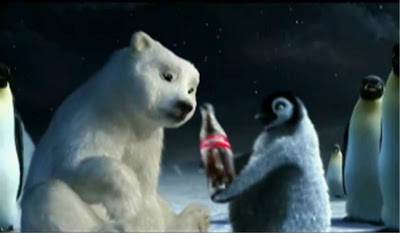I finally checked out the “framing” presentation by Chris Mooney and Matthew Nisbet which is available with PowerPoint slides here. I am not particularly interested in the debate over this issue, but I thought I would give it a try in light of my hope of improving media coverage and public comprehension of science. This is not my entry into the debate as I think it has garnered more attention that it warrants already; this is simply a set of thoughts on the issue after having spent the time watching the talk.
I will say that I found much to agree with as far as the descriptive components were concerned. That is, I think Mooney and Nisbet make some good arguments with regard to what is and is not working in scientific communication. This is Nisbet’s subject of research, and it was useful to see actual data applied to the question. My sense was that “framing” likely is something that nonspecialists do use when evaluating complex issues, and that this is a problem for scientists who want to convey complicated ideas with societal ramifications to them. However, I think the discussion runs aground in three major areas: 1) How it is presented to scientists, 2) In the failure to distinguish it from “spin” or “marketing”, and 3) When it shifts from description to prescription.
As to the first, Mooney and Nisbet seem to use an only partially appropriate “framing” when speaking to scientists who, both as individual people and as part of a collective, exhibit inherent preferences, biases, and other filters. To wit, scientists in general will be unwilling to compromise certain principles, and there appears to be insufficient appreciation of this fact by framing advocates. For example, scientists will not simplify to the point of eroding accuracy, they will not do anything that could be perceived as lying to the public, and they will never give up on the notion that getting the public to understand science is the primary long-term goal. From what I can gather, Mooney and Nisbet are not asking scientists to compromise on these principles, but this is not stated clearly — following their own advice, this should be presented clearly and repeatedly so as to reassure scientists that they are not being told to betray their scientific ideals. (And if they are asking scientists to do so, then this should be made clear also so that the debate can be put to a swift end).
The question of motives also comes into play as part of the mis-framing of framing. No one can be totally objective, so what scientists are trained to do is to look for biases and associated violations of objectivity so that these can be factored into the evaluation of scientific arguments. Personally, I found myself asking “why do they care what scientists do?”. One obvious explanation is that they are concerned citizens with a particular interest in science and its impacts on society. This is not stated upfront, however, and so questions come up about whether this isn’t an exercise in attention getting (and possibly book promoting) as much as a sincere call to action.
Finally, while I do not read their blogs, I have seen a few links to statements that I have found offensive to my scientific sensibilities. As a case in point, Mooney argues on his blog that science journalists are not the problem (this is also stated in the presentation). It would seem to follow, therefore, that if science is reported inaccurately, sensationalized, overstated in its implications, or otherwise distorted, that is the fault of scientists. Worse, Mooney goes so far as to argue that scientists should just shrug it off and move on if they are misquoted in the media. Again, this ignores the frame that scientists use, in which accuracy is of paramount significance. He also seems to think that simply telling scientists about the difference between a science journalist (well-trained and comprehensive) and a non-science journalist reporting on science (no expertise or experience in dealing with such issues) will make the resentment of the media’s handling of research disappear. It will not.
The second point is the one that has been the primary subject of discussion by some prominent scientist-bloggers, namely that “framing” bears a striking resemblance to “spin”. We all know that “spin” plays a substantial role in politics. To scientists, this is not something to be emulated. I won’t go so far as to say that framing is mere spin, but throughout the presentation I had the strong notion that it was largely indistinguishable from “marketing”. Scientists should care about how their work is presented to and received by the public, and therefore marketing is a legitimate consideration. Indeed, scientists market their work often — to granting agencies, students, journals, and colleagues. Adding some audience-specific adjustments when dealing with the public is perfectly reasonable, but if that’s all “framing” is, then it’s really just repackaged marketing truisms.
The third point, in which Mooney and Nisbet transition from describing the issue to prescribing what scientists should do, was by far the weakest part of the talk. In fact, I found almost nothing in their presentation that actually applied to me as an individual researcher. Almost everything they suggested actually fell under the purview of science writers, press offices, lobby groups, professional societies, or educational organizations. I still do not know what they expect me to do even with information in mind about how the public frames important topics. As a result, much of the talk seems to be about telling scientists what they are doing wrong with no real solutions that individual scientists can or will implement.
If I may, I would also add that Mooney and Nisbet’s discussion is, at heart, not about science or communication, but about American politics. In many other countries, scientific literacy is much higher, issues do occupy the primary stage in election campaigns, and religion and partisanship play a much smaller role in influencing decisions about science. Once again, this suggests that education about science early on is an effective strategy and a viable objective. The question of framing is more geographically and temporally localized than this, and so it is difficult for some scientists who are trained to look beyond such limitations to the larger picture to make framing a primary tool.
 In stark contrast to all of this ambiguity and apparent misreading of scientific audiences, I point to the recent book A Scientist’s Guide to Talking with the Media by journalists Richard Hayes and Daniel Grossman, published by the Union of Concerned Scientists. I am only part way through the book, but already I can note that it does a fine job of framing the topic in a manner acceptable to scientists. Hayes and Grossman are very clear that they have the utmost respect for science and scientists, and that they absolutely do not wish to see spin implemented at the expense of accuracy. Theirs is a well articulated set of practical suggestions for dealing with the media. They do not appear to blame scientists but instead point to examples where different strategies could have forestalled problems. They do not let science reporters off the hook, but do try to promote a better understanding among scientists of the challenges of writing for a nonspecialist audience. They do not point out the challenge and leave the solutions unclear, but give point by point suggestions on how to improve the important relationship between scientists and those who report science. As a scientist with some experience with the media, I find a great deal of use in this volume. And I do not hesitate to recommend it as an alternative to the far less helpful argument about framing.
In stark contrast to all of this ambiguity and apparent misreading of scientific audiences, I point to the recent book A Scientist’s Guide to Talking with the Media by journalists Richard Hayes and Daniel Grossman, published by the Union of Concerned Scientists. I am only part way through the book, but already I can note that it does a fine job of framing the topic in a manner acceptable to scientists. Hayes and Grossman are very clear that they have the utmost respect for science and scientists, and that they absolutely do not wish to see spin implemented at the expense of accuracy. Theirs is a well articulated set of practical suggestions for dealing with the media. They do not appear to blame scientists but instead point to examples where different strategies could have forestalled problems. They do not let science reporters off the hook, but do try to promote a better understanding among scientists of the challenges of writing for a nonspecialist audience. They do not point out the challenge and leave the solutions unclear, but give point by point suggestions on how to improve the important relationship between scientists and those who report science. As a scientist with some experience with the media, I find a great deal of use in this volume. And I do not hesitate to recommend it as an alternative to the far less helpful argument about framing.




